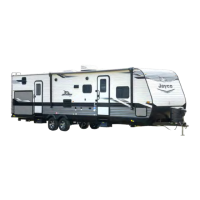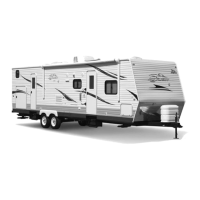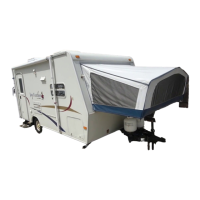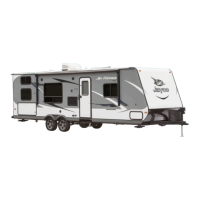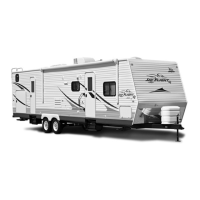Grounding is your personal protection from electrical shock.
Do
not use any adapter, cheater, or extension cord that will break the
continuity of the grounding circuit connected to that third pin.
NEVER
remove the grounding pin for convenience of being able to
connect to
a
non-ground (only 2-prong) receptacle.
SAFETY
WHEN
EMERGENCY
STOPPING
Always carry road flares and/or reflective triangular highway
warning devices to be displayed when necessary.
Pull
off
the
roadway as far as possible when changing flats
or
for other
emergency situations. Turn on your vehicular hazard warning
flashers when parked alongside a roadway,
if
only for a minute or
two.
ADDITIONAL
SAFETY
CONSIDERATIONS
1.
Sanitize the fresh water supply system periodically (see
sanitizing instructions).
2.
Keep water connection fittings from coming in contact with the
ground or drain hose to reduce chance
of
contamination.
3.
Enlist services of
a
qualified technician to
fix
gas or electrical
appliances.
4.
Always have a serviceable fire extinguisher placed in an easily
accessible location.
5.
Please read carefully the loading section
under Chapter
111
related to your respective trailer.
6.
Insure that tires are in good condition and properly inflated.
Watch inflation especially closely
-
under-inflated tires will
overheat. Overheated tires are
a
potential hazard as they may
throw rubber and cause a blowout.
7.
Check and tighten wheel lugs regularly (every
50
miles when
new until
200
miles are reached and then check lugs every
500
miles).
8.
Check brakes in a safe area
-
not while traveling a busy
highway.
9.
Use seat belts (motor homes)
at
all times.
10.
Disconnect television power cord an6 antenna lead-in during
local thunderstorms and lightning activity.
11.
Always solidly block trailer wheels before unhitching.
12.
Before leaving a camp area with
a
trailer in tow, insure that
the safety
pin
or Iocking lever is seated, breakaway wire is
attached
to
tow vehicle, the jack
is
raised so that it cannot
touch
the
ground, and the dolly wheel removed, 110-volt
electrical cord properly stored, safety chains are connected, and
all interior lights
off.
13.
Observe the warning
labels
attached to your vehicle concerning
L.P.-gas,
water, electricity, and loading.
14.
Observe the maintenance chart
in
Chapter
VII
related to your
respective unit.

